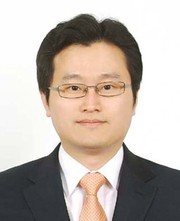Published their research in the world renowned journal “Nature Communications”
Hanyang University announced on the September 28th thatProfessor Choi Jae-hoon's research team of the Department of Life Science has newly identified the initial process of aortic valve disease triggered by hyperlipidemia with the advanced life science research techniques.
Aortic valve disease is caused by lipid deposition in the aortic valve due to the damage to endothelial cells or hyperlipidemia. The worse the disease gets, the narrower aortic orfice becomes as the valve becomes fibrous and calcified. As a result, the "Aortic Valve Stenosis" in which the valve does not opening thoroughly and blood fails to move from the left ventricle to the aorta aggravates.
According to previous studies, aortic valve stenosis is a dangerous disease with a mortality rate of 50% within two years after the symptoms. there is only an invasive treatment such as valve replacement, and non-invasive therapeutic modality has been developed yet, which makes it more crucial to identify the initiation and progression of aortic valve disease from a preventive point of view.
To find out the initial progress, Professor Choi's team used "Single-cell transcriptome analysis," the latest life science research technique that can analyze genes in a single cell unit. The research team identified how immune cell groups in the valves of hyperlipidemic mice changes, confirming pro-inflammatory change in aortic valvular interstitial cells. In addition, the research team found out that certain aortic valvular endothelial cells specialized in lipid handling increased in disease status, and that the endothelial cells exhibit anti-inflammatory effects through the activated "PPARγ", the transcription factor.
Moreover, Professor Choi's team then discovered the patient's cellular diversity and changes in disease status in the aortic valve and further revealed that LDL cholesterol control and PPARγ activation in early aortic valve diseases relieve inflammation within the valve.
The result of this study are expected to enable understanding the initiation of aortic valve disease and discovering disease prevention using hyperlipidemia remedies and PPARγ agonists.
The results of this study, conducted with the team of Professor Lee Hae-ock of the Catholic University of Korea College of Medicine, were published in the world renowned journal Nature Communications on the September 17. Lee Seung-hyun (Doctorate) of the Department of Life Science at Hanyang University, Kim Min-kyu (Master), and Kim Na-young (Doctorate) participated as co-authors, while joint research teams from Hanyang University, Catholic University of Korea, Ewha Womans University, Seoul National University, Yonsei University, Sungkyunkwan University, and University of Illinois also participated. Bio&Medical Technology Development Program (Korea Mouse Phenotyping Center) and Basic Science Research Program (Mid-sized Research, Science Research Center, Engineering Research Center) implemented by the Ministry of Science and ICT supported this research.






Click to see the paper:
키워드
 '한양위키' 키워드 보기
#SDG3
'한양위키' 키워드 보기
#SDG3

